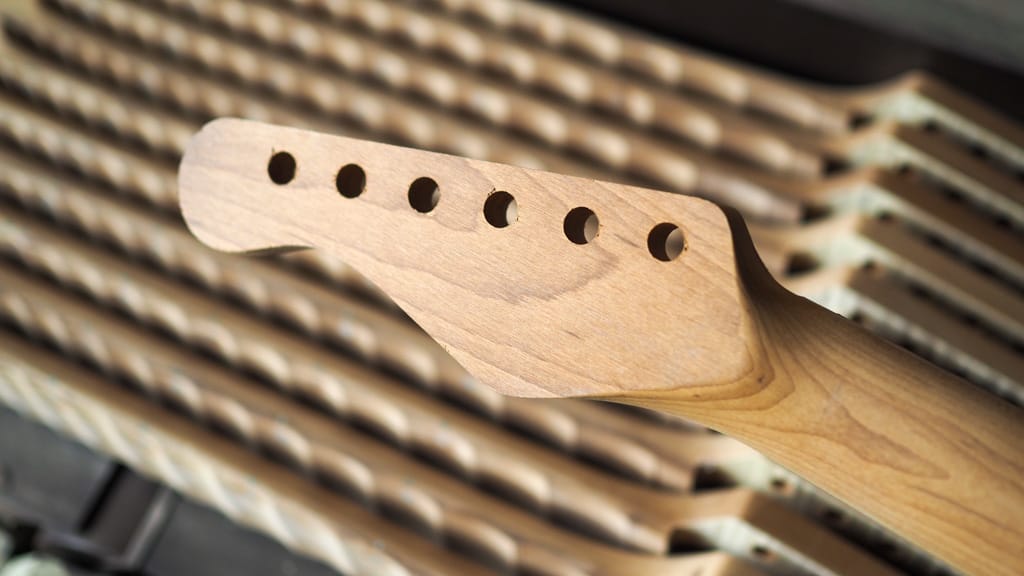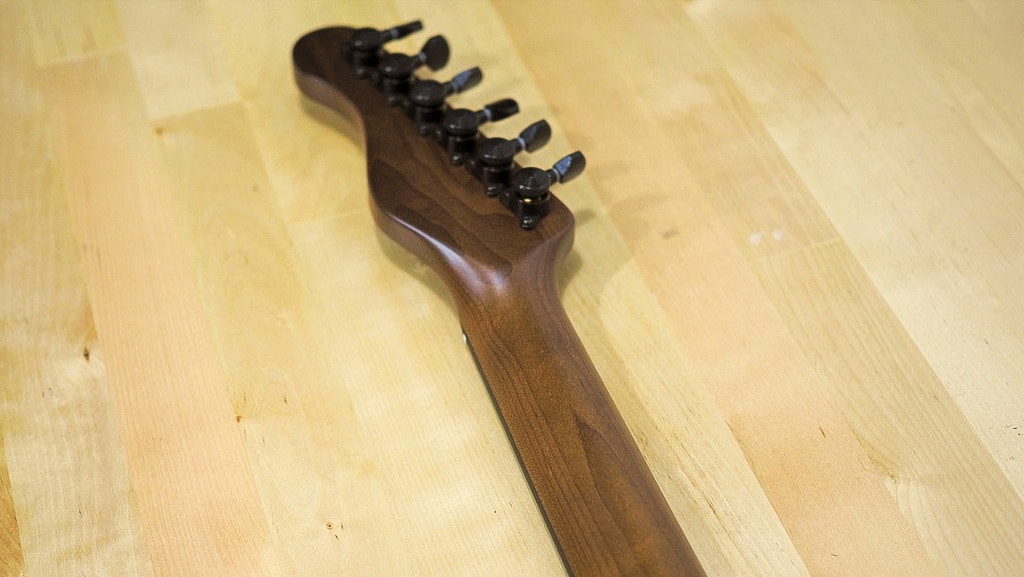First thing’s first: is there a difference between “torrified,” “baked,” and “roasted” maple necks? Technically, it can be argued that the equipment and process used is what separates the terms. Practically speaking, they are no different from one another. Manufacturers use them interchangeably and the end result is the same:

A beautiful, caramel-tinted neck.
Now to break down why anyone would do this aside from the aesthetics: it’s because it helps make a more stable neck against temperature and humidity changes.
Simple and effective. But, how?
A raw, maple neck is placed in a controlled environment where the temperature is slowly brought up. Once the temperature reaches a certain point, a Maillard reaction begins to occur. This is a chemical reaction that starts to break down the sugar and water within the wood, slowly removing it. The residue left from the reaction colors the wood with a light tan hue. How high the temperature is raised affects the final color. Taking it to higher temperatures makes a much richer-colored tint; similar to robust toffee.

A deeper, toffee colored neck
However, if the maple is roasted at too high a temperature it starts to break down the cell walls and renders the maple weak. If the temperature is also brought up too fast, it can cause warps and humps in the wood. In some cases, it’s not even possible to make a neck out of a piece of maple that is roasted just a little too much!
After the process is finished, you are left with a more stable maple neck. Because of the roasting process, the neck can be slightly lighter in weight (depending on the piece of wood) and is more resistant to absorbing moisture. This makes roasted maple necks a great option if you travel frequently or constantly go between humid and arid climates with your Halo guitar... or if you're Max Carlisle and you shred death on iron mountains:
Your email address cannot be published. Required fields are marked*




No comments